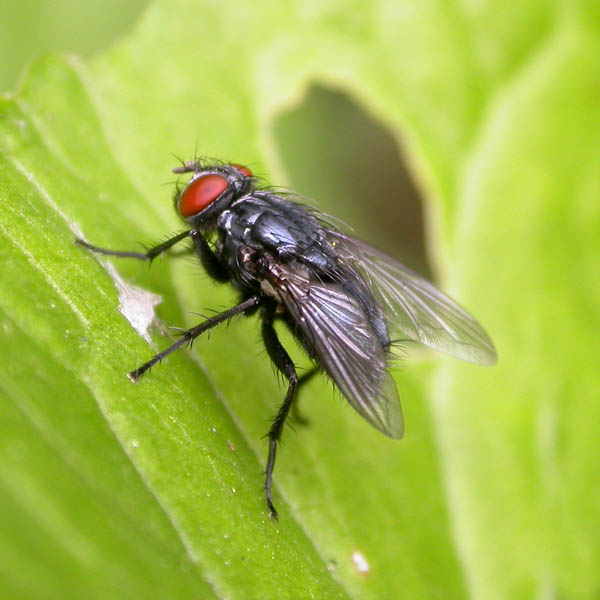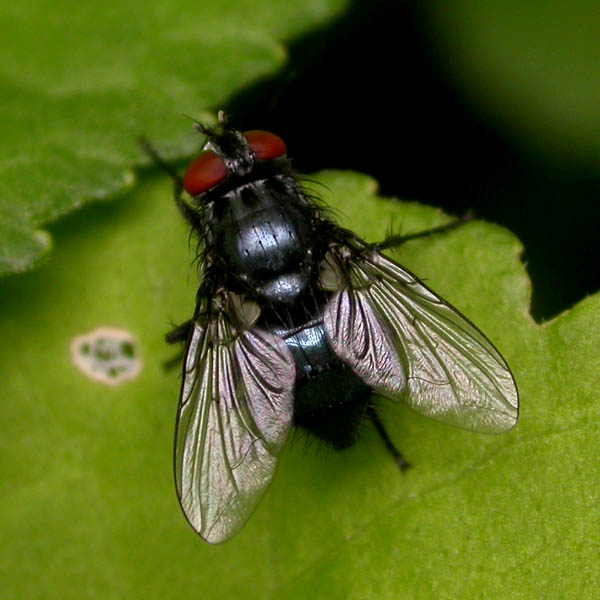Diptera.info :: Identification queries :: Diptera (adults)
Who is here? 1 guest(s)
|
Melinda viridicyanea, Calliphoridae, Hungary
|
|
| Xespok |
Posted on 06-09-2006 21:59
|
|
Member Location: Debrecen, Hungary Posts: 5550 Joined: 02.03.05 |
Another one which could go for either Tachinidae or Muscidae. A month ago or so someone posted a similar fly, which turned out to be a Tachinid, but I can not find the thread. Lateral view. Xespok attached the following image:  [74.61Kb] Edited by Xespok on 11-09-2006 21:44 |
| Xespok |
Posted on 06-09-2006 22:01
|
|
Member Location: Debrecen, Hungary Posts: 5550 Joined: 02.03.05 |
A view from above the fly.
Xespok attached the following image:  [80.52Kb] |
| ChrisR |
Posted on 07-09-2006 11:37
|
|
Administrator Location: Reading, England Posts: 7699 Joined: 12.07.04 |
Looks like a tachinid but the insect and photo is so black/dark that it's hard to see any nice helpful identification features. I'll pass on this and wait for Theo  |
| Zeegers |
Posted on 07-09-2006 18:27
|
|
Member Location: Soest, NL Posts: 18787 Joined: 21.07.04 |
No Tachinid The arista in plumose in first picture (difficult to see, but it is). all 'bluish' tachinidae have arista bare [ONE TIME DISCLAIMER: all these rules are rules of thumb. There is undoubtedly an exception around on the Bismarck Archipelego] Theo |
|
|
|
| Tony Irwin |
Posted on 07-09-2006 20:42
|
|
Member Location: Norwich, England Posts: 7234 Joined: 19.11.04 |
In all respects this fly fits a female Melinda viridicyanea (Calliphoridae). It does have a presutural intra-alar which is unusual, but does sometimes occur in this species.
Tony ---------- Tony Irwin |
|
|
|
| Xespok |
Posted on 08-09-2006 21:27
|
|
Member Location: Debrecen, Hungary Posts: 5550 Joined: 02.03.05 |
Sounds interesting. This should be a common species in Hungary, alledgely developing in some snail species. The calyptrae are white and the 6-7 mm size also fits well with your ID. The topcell? is open which also fits well. The only thing that does not entirely fit the descriptions is that M. v. should have black thorax, rather than a patterned metallic blue one. However, maybe the shininess disappears in pinned specimens. According to my literature, M. gentils has one ia bristle, but in that species the black spots before the suture are different from the three spots characteristic for M. v. Would this be the male? Thx. Edited by Xespok on 08-09-2006 21:58 |
| Tony Irwin |
Posted on 08-09-2006 22:25
|
|
Member Location: Norwich, England Posts: 7234 Joined: 19.11.04 |
According to Rognes, 1991 (FES - Blowflies), both Melinda species have thorax and abdomen metallic blue, with white dusting. They are certainly very dark and appear to be black in some lights, but as your photo shows, they do have blue reflections. On the other hand, the fly which you thought might be the male has no blue reflections on the thorax, but the abdomen has bronze-green reflections. This would make it either Onesia or Bellardia. I cannot say which genus from this photo. Tony ---------- Tony Irwin |
|
|
|
| Jump to Forum: |















